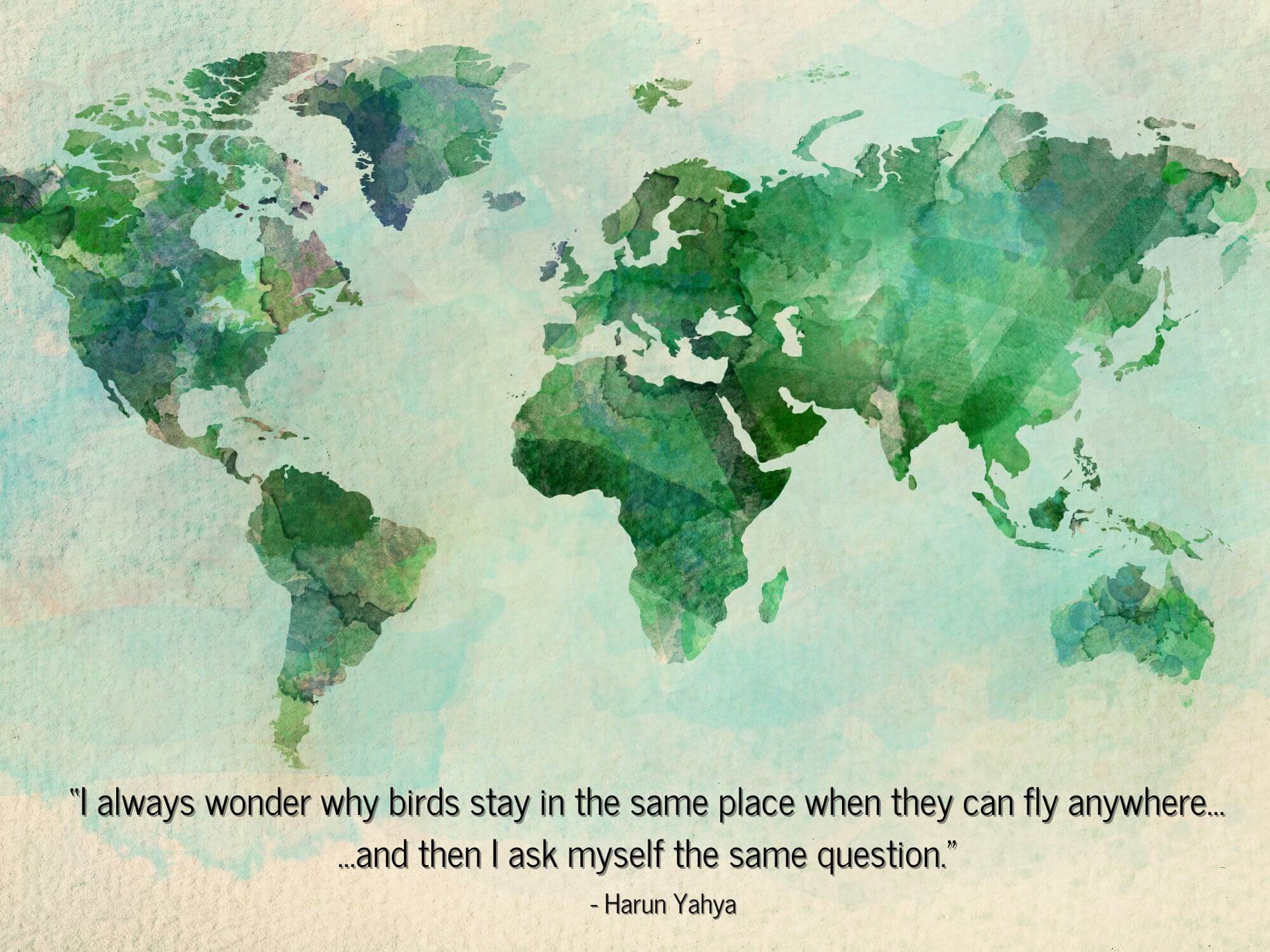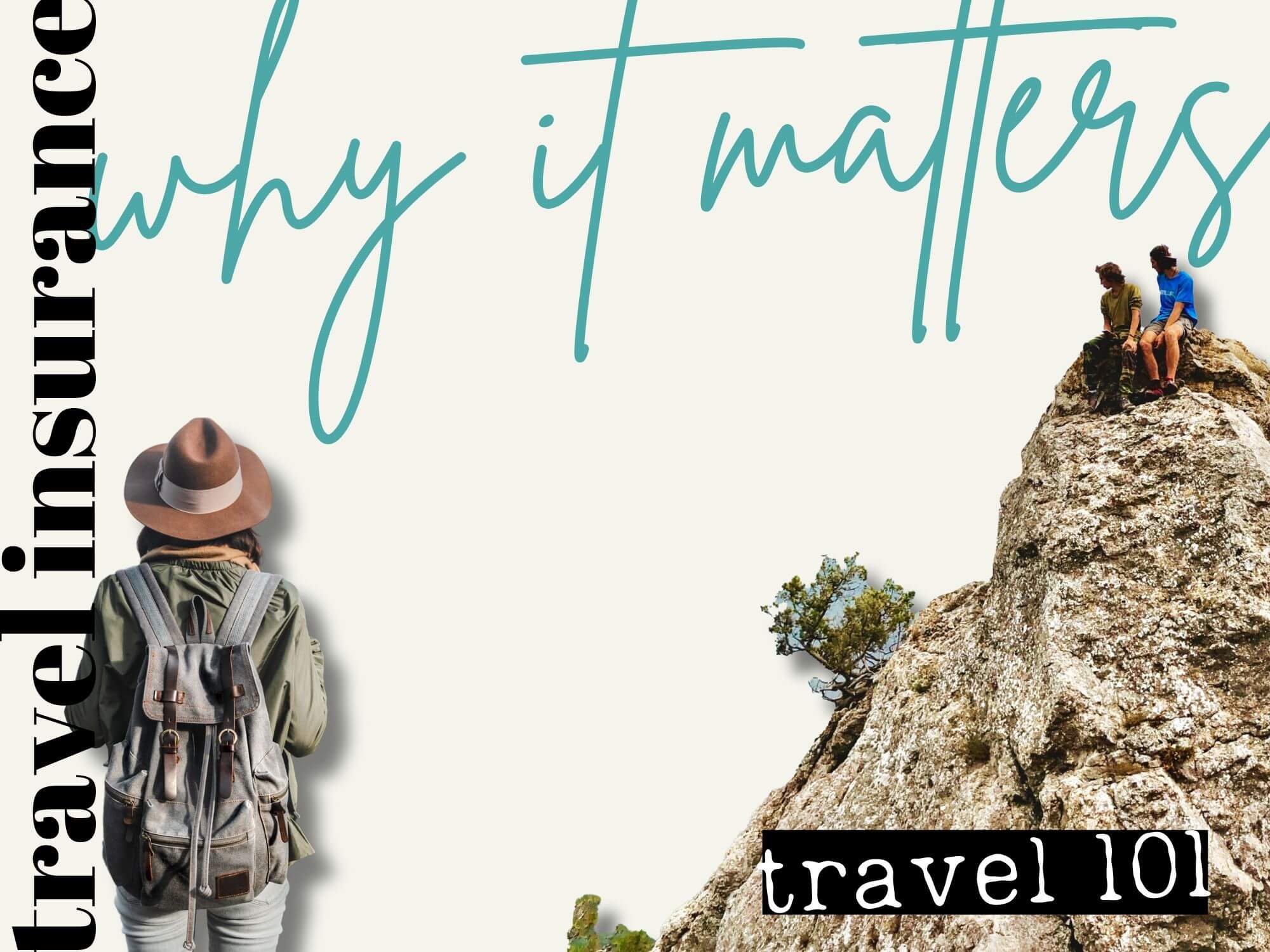How to Plan An International Trip (10 steps I always take)
I write to you from a medium-sized room just outside of Tokyo. And if you follow me at all, you’ll know this is pretty normal for me. I spend a lot of time in Japan…
So over the years, through various mistakes and awkward moments, I’ve gotten my travel planning down to a science. So I decided to pack my process into this article, to hopefully make the whole process easier for you. This is how to plan an international trip.
Alright, let’s do this!
1. Choose Your Destination(s)
This is the fun part of international trip planning. Where do you want to go?
I love researching new destinations and doing some initial planning. It excites the imagination with strong adventure vibes. But if you’re not sure where to go, that’s fine too.
In this case, you may want to start with some self reflection:
What are your goals?
Do you have any travel preferences?
What’s your lifestyle look like?
At this point, I like to create a shortlist of my top picks. No decisions need to be made yet. To narrow down your list, you can ask some more key questions like:
What requirements are there for my destinations?
Is it safe there?
Is my destination tourist- or beginner-friendly?
Does it fit into my budget?
You may also be wondering how far in advance you should plan an international trip. Technically, you could be completely spontaneous with it. But this is more common with frequent travelers who know the routine and can quickly put their life in a suitcase with ease.
But I’d recommend giving yourself at least a month or two to plan things out, create a budget and get everything in order.
Explore more:
➤ Best Countries for First-Time Travelers
2. How Long Will Your Trip Be?
I love to take longer international trips. For example, I usually do multi-month trips to Japan and spend time fully immersing myself in the culture.
But this isn’t necessary — especially if this is your first time traveling overseas, in which case I’d recommend trying a shorter trip. Culture shock and homesickness can happen unexpectedly and if you’ve committed to a two-month trip, this can create stress.
Easing into the traveler's life by taking shorter, closer trips is a great way to dabble and dip your toes into things. The farther you push yourself outside of comfort zones, the easier things will get and the more confident you’ll become.
So, how long should you make your trip? It’s up to you, but here are some quick tips:
Consider jet lag and give yourself extra days for rest
Keep your dates flexible so you can fly on the cheapest days
Consider what you want to do and be realistic with scheduling
Research how long other travelers recommend for your particular destination
Check how long a tourist visa lasts — every country is different
3. Research Accommodations + Flights
At this stage, you’ve likely narrowed down your country choices and have a clearer picture for how long your trip will be. So now it’s time to research your flights and hotels!
I love this part.
Personally, I just use Google for everything — especially for flights. It’s the most intuitive flight search tool (IMO) and it’s free from annoying popups, ads and noisy website clutter I often get with other flight search sites.
When planning an international trip, I keep my dates flexible since flying on some days will be notably cheaper than others.
And if you’re looking for an option to pay for your flight in smaller installments (rather than one big, painful bill), I usually use Alternative Airlines.
You can read my full review here, but essentially it’s an online booking site that lets you use alternative payment methods like PayPal Credit (which is interest-free if you pay it off within six months).
Explore more:
➤ What’s A Share House?
4. Create A Dang Budget
Budgets seriously help. Because trust me, being stuck abroad with no money sucks. So don’t skip over this part!
When I budget for travel, I usually keep things relatively casual and organize my expenses into two buckets: fixed vs. variable costs.
But let’s start with fixed costs. These are things I usually buy beforehand and don’t vary much during my trip. They include things like:
Plane tickets and fees
Accommodations
Travel insurance
Variable costs on the other hand, are more flexible and can change depending on how I travel, what I do and where I go. They include things like:
Food
Shopping
Experiences
Transportation
I usually start by budgeting my fixed costs to make sure that I have more than enough money to cover those first. Because a lot of my variable costs (besides things like food) are often non-essential.
I also like to inflate my projected costs a bit — by rounding up, for example — to create a sort of built-in contingency fund.
And of course, every country will require a different budget, so remember to do your research and plan on saving more than you think you need.
5. Buy Your Tickets + Reserve Your Room(s)
At this point, you’ve likely decided on your destination and have some accommodations in mind. So now it’s time to make things real.
Buy your tickets. Reserve your rooms. This is the step that makes everything suddenly feel very real. So congrats!
Also remember to purchase proof of onward travel before you depart (not just a single one-way ticket). This will prove to immigration that you’ll actually be leaving their country and not just staying forever.
This is part of your travel essentials, which I talk about more down below.
But for now, it’s time to reserve your (initial) rooms and tickets. It’s especially important to have your hotel set up (at least for your first night after you land).
When filling out immigration forms, you’ll need an address and phone number for where you’re staying. This means you need to have accommodations planned (even if it’s staying with a friend, that’s enough).
So buy those tickets and rooms!
6. Create A Loose Itinerary
I love casual traveling. Part of this means keeping things open for spontaneity.
The more I let go of how things should be (like a busy schedule), the more I relax and enjoy unique travel experiences. So I always recommend creating a “loose” itinerary. This is one that is flexible and open.
Of course, scheduling in some popular things to do is great too, but also leave room for a little aimless wandering and mood-based travel. International travel is hard to control and predict fully — especially if it’s your time abroad.
So it’s smart to loosen your expectations. By letting go, you can enjoy more authentic and stress-free traveling.
Explore more:
➤ How I Travel Slow
7. Grab Some Travel Insurance
If you’re traveling overseas, your domestic health insurance obviously won’t work. So to protect yourself from emergency medical or environmental situations, travel insurance is super important.
It’s peace of mind, affordable and a simple and smart way to protect yourself.
Personally, I use SafetyWing for my travel insurance. They operate like a monthly subscription, which you can turn on and off as you want. They’re super affordable (I pay around $50 per month), have great customer service and provide excellent coverage.
So don’t skimp on your travel insurance! Things happen.
Explore more:
➤ Best Long-Term Travel Insurance
8. Consider Having A Travel Goal
I love to add deeper meaning to my exploring, which is why I always have creative travel projects. Put another way, I always have a travel goal or some purpose to my adventures.
This creates an elevated intention for traveling and makes it more engaging and active.
And it can be anything.
While I usually opt for creative stuff like music, video and writing, there are plenty of other goals worth trying. Here are a few examples:
Learn and use the local language
Go on a food quest of all the best restaurants
Document your journey in a photo album or scrapbook
Create a blog or vlog
Explore more:
➤ My Favorite Travel Goals
9. Double Check Your Travel Essentials
When you travel internationally, there are steps to take.
At the most basic level, you need a passport. But there may be other documents or requirements depending on where you’re from and where you’re going. So it’s super important to always double check that you have everything you need.
That’s why I’ve put together this checklist of international travel essentials! It includes all the stuff you actually need. But also be sure to do your own due diligence and check with the official government website for whatever country you’re visiting for specific travel requirements.
It’s usually pretty simple and basic, but you don’t want to miss any important steps. So it’s best to double (or triple) check everything before you go.
10. Connect + Immerse Yourself
I once had a housemate who traveled halfway across the world, but spent most of their time in their room, playing video games.
While I fully support this type of relaxed, guilty-pleasure traveling, I also think it’s important to connect with the local culture and immerse yourself in it.
So that’s my last tip. Now that all the logistics are finished and you’re close to embarking on your trip, set the intention to immerse yourself into the culture you’re visiting — at least a little bit.
Of course, you don’t need to spend every moment of everyday connecting with people and local communities. But a little bit goes a long way.
Here are some ways to connect and immerse yourself deeper into your travels:
Meet and connect with other travelers or locals
Participate in traditional culture and customs
Go to local restaurants and spots (not just touristy areas)
Use the language (even just a little)
And that’s it! Congratulations, you’ve planned your first international trip. But one question still remains…
Where will you go for your next trip?
Later ✌️
Want More? Nice. Here’s More.



